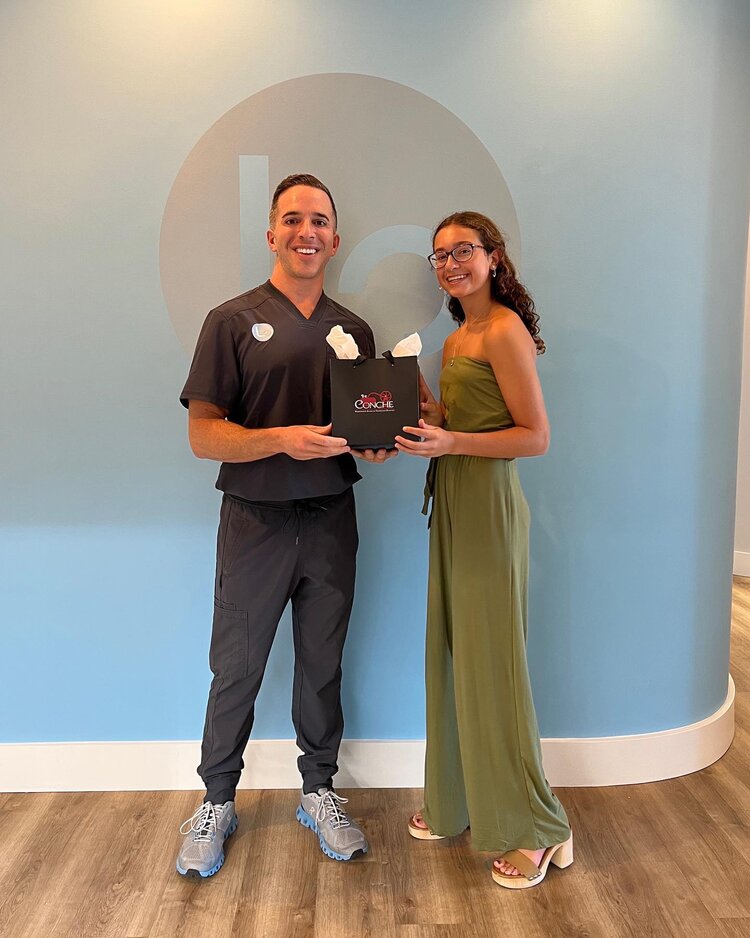The 4-Minute Rule for Legacy Orthodontics
An orthodontist is a dental practitioner educated to identify, avoid, and treat teeth and jaw irregularities. They correct existing problems and are trained to determine problems that might create in the future. Orthodontists collaborate with people of all ages, from children to grownups. People commonly connect a perfect smile with health.
Malocclusion, or misaligned teeth, can result in dental concerns, including tooth degeneration, gum tissue illness, and difficult or uncomfortable chewing. Not everyone is birthed with straight teeth. If you have a bad bite or huge spaces in between your teeth, you may desire to speak with a dentist focusing on orthodontic care.
Not known Details About Legacy Orthodontics
( Image Credit Report: DigitalVision/Getty Images) Orthodontists make use of repaired and detachable oral tools, like braces, retainers, and bands, to alter the setting of teeth in your mouth. Orthodontic therapy is for oral abnormalities, including: Misaligned teethBite troubles, like an overbite or an underbiteCrowded teeth or teeth that are also much apartJaw misalignmentThe goal of orthodontic treatment is to enhance your bite.
A healthy and balanced bite ensures you can eat, eat, and talk correctly. While you could believe of orthodontists as mainly for children or teens that require braces, they can correct dental issues at any kind of age. Orthodontists attend college, dental institution, and orthodontic college. After college graduation, they spend 2 or 3 years in an orthodontic residency program.
All orthodontists are dental practitioners, yet not all dentists are orthodontists. Orthodontic residency programs offer extensive, focused guideline for oral specialists. They focus on two areas: Exactly how to appropriately and securely move teeth Exactly how to properly direct advancement in the teeth, jaw, and faceOnce an orthodontist has completed training, they have the option to become board certified.
The smart Trick of Legacy Orthodontics That Nobody is Discussing
Malocclusion leads to tooth congestion, an irregular jaw, or uneven bite patterns. Malocclusion is typically treated with: Your orthodontist affixes metal, ceramic, or plastic square bonds to your teeth.
Some individuals require a headwear to aid relocate teeth right into line with stress from outside the mouth. A retainer is a custom-made tool that maintains your teeth in location.
They're usually made use of on children. They can create extra room in the mouth without needing to draw teeth. If you have a severe underbite or overbite, you could require orthognathic surgical treatment (likewise called orthodontic surgical treatment) to lengthen or shorten your jaw. Orthodontists use cords, medical screws, or plates to sustain your jaw bone.
You may need to see an orthodontist if you have: Crowding or otherwise enough room for all of your teethOverbite, when your upper teeth come over your base teethUnderbite, when your bottom teeth are too much forwardSpacing or concerns with gapsCrossbite, which is when your upper teeth fit behind your bottom teeth when your mouth is closedOpen bite or an upright void between your front Read Full Report base and top teethMisplaced midline, when the center of your bottom and top teeth don't align Remedying a dental malocclusion can: Make attacking, chewing, and speaking easierImprove the balance of our face and your general appearanceEase pain from temporomandibular joint problemsSeparate your teeth and make them easier to cleanse, assisting prevent dental caries or tooth cavities It's typically a dental professional who initially notices misaligned teeth during a regular exam.
What Does Legacy Orthodontics Do?

Throughout your first orthodontic appointment, you'll likely have: An oral examPhotos taken of your face and smileDental X-raysPanoramic (360 level) X-rays of your face and headImpressions to produce mold and mildews of your teethThese examinations will aid your orthodontist understand how to continue with your treatment. leesburg invisalign. An orthodontist is a dental professional that's had training to treat your teeth and jaw
An orthodontist is focused on your bite, so something like a broken tooth would certainly be handled by a dental professional. Orthodontists are concentrated on your bite, or the means your teeth fit together, and the straightness of your teeth.
Ever questioned just how celebrities always seem to have completely straightened teeth? The answer typically depends on the knowledgeable hands of an orthodontist. What precisely does an orthodontist do? Orthodontists are dental experts who concentrate on remedying abnormalities in the teeth and jaws. Their competence goes past simply developing a beautiful smile; it encompasses improving your overall oral health and feature.
Indicators on Legacy Orthodontics You Need To Know

While braces are the most frequently recognized orthodontic treatment, orthodontists have a varied toolkit at their disposal. The specific method picked depends on the seriousness of the instance, the patient's age, and private choices. These reliable braces use a system of braces adhered to the teeth and connected by wires.
Clear aligners, like Invisalign, are a preferred alternative for clients seeking a much more very discreet therapy alternative. These detachable trays are custom-made to progressively move the teeth's setting. Headwear might be made use of combined with dental braces or aligners to apply added targeted pressures, specifically for correcting jaw discrepancies. In cases of narrow jaws, palatal expanders can be used to produce space for correct tooth placement.
Comments on “The 6-Minute Rule for Legacy Orthodontics”